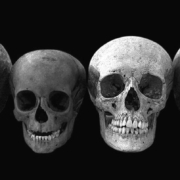Although it remains a fascinating and sometimes macabre question whether one is allowed to possess a human skull, behind it unfolds a dense and intricate forest of ethical, legal, and cultural considerations. Law enforcement agencies, lawyers, and even private collectors sometimes find themselves confronted with human remains, whether in the course of professional forensic investigations, academic research, or simply out of a passion for collecting. Drawing on my extensive experience and profound knowledge of this subject, I aim to illuminate the legal, ethical, and cultural-historical foundations that must be considered in this context in a comprehensive and neutral guide for those who wish to explore the phenomenon of the death cult more closely.
Posts
Given the legal questions we often face, especially regarding the quantification of “very likely” in percentages, I would like to explain why I, as an expert, have decided to avoid such numerical assessments. The probability of identity or non-identity is deliberately formulated as a verbal predicate because biostatistical calculations are problematic. There is a lack of sufficiently extensive and validated databases that consider various ethnic origins and age groups. Moreover, the reference images were not created under standardized conditions. Therefore, the “actual” expression of features is often not discernible, and calculations based on the “apparent” expression could lead to erroneous conclusions.

